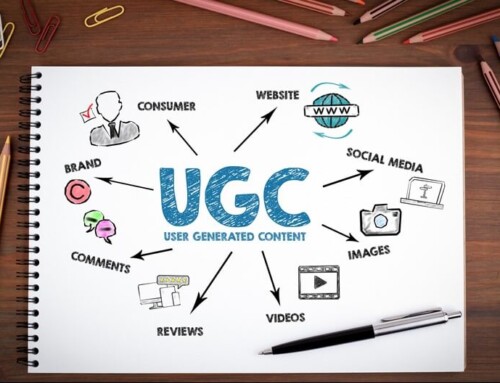Business-to-business (B2B) selling has its own unique set of challenges such as long sales cycles and buyers that are already well-versed in the market. Add to that the personality of the typical salesperson, who craves independence and is protective of it. If your salespeople fall into this category, they might be resistant to a unified strategic approach to sales.
However, by incorporating proven strategies that yield consistent results in short order, you can engage your sales team and make compliance using a tested approach attractive to them. After all, the more they sell the greater the odds are that quotas will be met, your team will be excited to earn more commission, and they will enjoy the additional accolades they receive.
Here are five proven high-growth sales strategies to attract more qualified prospects and win new customers.
1. CREATE BUYER PERSONAS
The concept of an ideal customer profile, often called a buyer persona, is usually discussed in relation to the marketing department. But considering both the marketing department and sales team are trying to appeal to the same prospects, it makes sense for sales teams to leverage buyer personas, as well. In fact, 71 percent of companies that exceed revenue and lead goals have documented personas compared to 37 percent that meet goals and 26 percent who missed them. (1)
To be clear, buyer personas are not the same thing as a target audience. The former considers more personalized and granular attitudes, behaviors, preferences, and pain points than the latter.
Accurate buyer personas are those backed up by data-driven market research. A study by Gallup found that leveraging data from buyer behaviors helped organizations outperform peers by 85 percent in sales growth and more than 25 percent in gross margin. (2) Demographics like gender, age, motivating factor and budget are applicable in business-to-consumer (B2C) personas. While some of the same demographics apply to B2B personas, many do not. Instead of focusing on details such as gender and age, good B2B buyer persona market research will concentrate on details like:
- Position the main decision-maker holds at their company.
- Additional roles that may influence decision making or block access to the decision-maker.
- Main pain points of the decision-maker.
- What prevents decision-makers, as well as decision-influencers, from doing their jobs.
- What aids decision-makers in doing their job (and improves overall company performance each year.)
If possible, the sales and marketing team should join forces, and each allot a part of your budget to securing a professional market research firm to conduct buyer persona studies. But if the budget simply is not there, sales and marketing can put their heads together and do the research in-house.
Once the results come in, both departments can leverage the buyer personas to create informational and persuasive content with real potential to engage and convert prospects.
2. GET MARKETING INVOLVED
Too often, sales and marketing teams work in silos functioning completely independently of one another. They rarely collaborate, which is perplexing considering their shared goals. One of the many areas in which sales and marketing should work together is creating relevant, meaningful, and timely content for each stage of the buyer’s journey.
Historically speaking the buyer’s journey refers to the three stages that prospects go through as they look for a new product or service:
- Awareness ─ The potential buyer gains awareness that they have a problem they need to solve. Alternately, a prospect may stumble upon an opportunity that they need to seize which may tap an unknown market, enhance competitive positioning, or challenge the present status quo.
- Consideration ─ After defining the problem (or opportunity,) the buyer considers options to solve it (or act while there’s significant ROI to be generated.)
- Decision ─ By conducting thorough research, the buyer makes a final decision about which product or service is the best solution.
So, why should sales care about this process? Today’s buyer is well-informed, and they often do their own research upfront. In fact, buyers spend 27 percent of their time on independent research, versus just 17 percent of their time meeting with potential suppliers. (3)
Prospects will often engage with sales professionals after buyers have much more knowledge than you might assume they have. When you leverage the buyer’s journey in sales materials or conversations, you appeal to where each prospect is in their journey. It gives sales a way to customize and focus conversations, which can ultimately lead to higher engagement and conversion levels.
Much like buyer personas, working with the marketing team on creating materials and conversations around the buyer’s journey will give you insight into what your prospects are thinking about and the reasons behind those thoughts.
PRO TIPS:
- Buyers prefer to conduct most research online or digitally. In fact, 67 percent of the buyers journey is performed digitally and/or online. (4)
- Buyers aren’t just spending more time researching than meeting with potential vendors. They may also be further into the decision-making process by the time they reach out to someone in sales. Studies have found that as much as 60-70 percent of decision-making research has been done before a buyer will contact someone in sales. (5)
- New research found that over half (55 percent) of B2B buyers rely on content as part of research before making decisions. (6) This means content is exceptionally important to today’s B2B prospects.
3. PRESENT VALUE IN MESSAGING
Modern buyers perform their research; therefore, your sales messaging must go beyond why your product or services are positioned to be superior to those of your competition.
Your messaging should convey to prospects how your organization and, more specifically, the team that would service them, can provide real and lasting value. This will closely mimic the multi-step process many buyers navigate to confidently finalize a purchase. This process might have as many as six steps. (3)
The most effective way to demonstrate the value of your solution is by establishing and nurturing a strong relationship with prospects. How can messaging and content during the buyer’s journey enhance the closing ratio when sales teams have limited direct contact with a buyer?
- Acknowledge the challenges the prospect has in their role, address the reasons behind these struggles and reassure them that your team has the expertise necessary to solve them.
PRO TIP: Different roles will have individual concerns even if they are involved in research for the same product or service. Be aware of what problems are unique to each role, at what point a role may become involved in the buying process and anticipate needs for additional parties that will have decision-influence in the purchasing process. - Ask the prospect questions that highlight the discrepancies between the goals they have and the results they have received so far, which will underscore what will happen if they stick with their current products or solutions.
PRO TIP: The status quo can be a powerful emotional barrier for prospects to avoid making a purchase. However, doing nothing is rarely free. Ultimately there are hidden costs of avoidance in taking action. These costs are often ones that the prospect hasn’t considered which can be as simple as maintenance, updates, or license renewals. On the other hand, they could be more costly such as unplanned repairs, upgrades, extra demand on resources, increased fees, or missed opportunities. Great case studies that demonstrate futureproofing, improvements on efficiency or productivity, more scalability or agility are all factors that can defuse status quo objections before they become deterrents to sales conversions. - Once you have invested the time and energy to nurture your relationship with the prospect, show them why your solution is the only one that can empower them to achieve their desired results.
PRO TIP: While selling is ultimately about people buying from people that they like and trust, the buyer must advocate for the solution and the organization behind it. It’s important for sales teams to not only build and nurture relationships, but to remember that prospects make purchasing decisions based upon the potential to achieve the outcome they desire most. Therefore, it’s critical for real-world results to become part of the buyer’s journey. More importantly, sales teams must be able to weave these elements into direct contact with prospects, and naturally placed in conversation.
Buyers appreciate companies that ease their journey through the decision-making process. It can make them three times more likely to feel more comfortable making a big purchase. (3)
4. ANALYZE EXISTING CUSTOMER DNA
Far too many sales teams stop at referrals when it comes to building a larger portfolio of quality prospects. This is a grave oversight, as your existing customer base offers enormous insight into sales prospects. Using a data-driven sales approach can make your business up to 6 percent more profitable than your competitors. (7)
You can unearth this gold mine by analyzing your current customers’ DNA ─ in other words, their data. All your customers, current and future, will share certain characteristics. Examples include:
- Problems they need to solve.
- Pain points that impact their day-to-day lives.
- Work related issues that keep them awake at night.
- Solutions they have tried that failed.
- Opportunities they know they are missing but don’t know how or where to find them.
By pairing the insight you get from your customer base with the buyer personas created by your marketing team, you will create a fully fleshed out embodiment of your ideal customer. And in doing so, your salespeople will learn the secrets to winning over more of your prospects specifically.
5. KEEP SOCIAL MEDIA SELLING TARGETED
Social media has ushered in new ways of promoting products and services that savvy organizations can use to their advantage. This comes with a major caveat for B2B selling, however. Many social media platforms will not yield the results that companies with a B2B audience want. Why? Platforms like Meta (Instagram and Facebook) are primarily geared towards consumers, not businesses.
LinkedIn is the exception to this rule. You will find decision-makers at all levels of an organization present on LinkedIn, for starters. Equally important is the tone of content like blogs and articles shared on LinkedIn. They are thought leadership pieces heavily dominated by business-related topics.
There are two ways of social selling on LinkedIn. The first is by sharing engaging thought leadership content on your feed that will capture prospects’ interest. Commenting on other members’ posts works, as well.
Messaging prospects directly is the second method. Most people will not be caught off guard if you approach them on LinkedIn. It is almost expected at this point. That said, like any other means of communication during the sales process, it is essential to gradually build a relationship with them. Be careful not to bulldoze prospects when you message someone, despite the interactions taking place on social media.
PRO TIP: Practice great connection etiquette when messaging other LinkedIn members. Read profiles entirely, including any kind of contact policy that they might have specifically for LinkedIn requests before making connections. Personalize your messages. Don’t send multiple connection requests or repeat messages when they go unanswered. Don’t ask for a meeting, especially if you only plan to sell something. Create meaningful engagements with people you want to build and nurture relationships with such as congratulating them on a promotion in a comment, read an article they have shared and engage by asking for further suggestions, and so forth. Whatever you do, make sure you make meaningful connections by doing more than simply sharing or liking connections’ feed activity.
UNIFYING SALES AND WINNING MORE CUSTOMERS
When you give your salespeople smart tactics that yield results, you will greatly improve your chances of convincing them to follow established protocols. High-growth strategies like the ones discussed in this article are an excellent way to unify the sales team and, most importantly, increase their success in winning more customers.
Are you looking to unify and improve your sales team’s success? If so, contact Gavel International to learn more about how we can help you with group travel incentive programs or teambuilding events.
_______________________
SOURCES:
1 https://unleashpossibledotblogdotcom.files.wordpress.com/2016/02/final-benchmark-study-understanding-buyers-2016-cintell-2.pdf
2 https://www.mckinsey.com/capabilities/quantumblack/our-insights/capturing-value-from-your-customer-data
3 https://www.gartner.com/en/sales/insights/b2b-buying-journey
4 https://www.wbresearch.com/relationship-between-b2b-buying-content-sales-changed-insights
5 https://www.wbresearch.com/relationship-between-b2b-buying-content-sales-changed-insights
6 https://www.demandgenreport.com/resources/research/2022-content-preferences-survey-b2b-buyers-crave-concise-research-based-content-to-inform-purchasing-process
7 https://www.mckinsey.com/~/media/McKinsey/Business%20Functions/Marketing%20and%20Sales/Our%20Insights/EBook%20Big%20data%20analytics%20and%20the%20future%20of%20marketing%20sales/Big-Data-eBook.ashx
This article was last updated on May 5, 2023
- Train LinkedIn’s Algorithm for Elevated Sales Prospecting - October 13, 2025
- Can Your Organization Afford a Dysfunctional Superstar? - October 6, 2025
- Take Action on Organizational Values to Improve Company Culture - September 8, 2025






